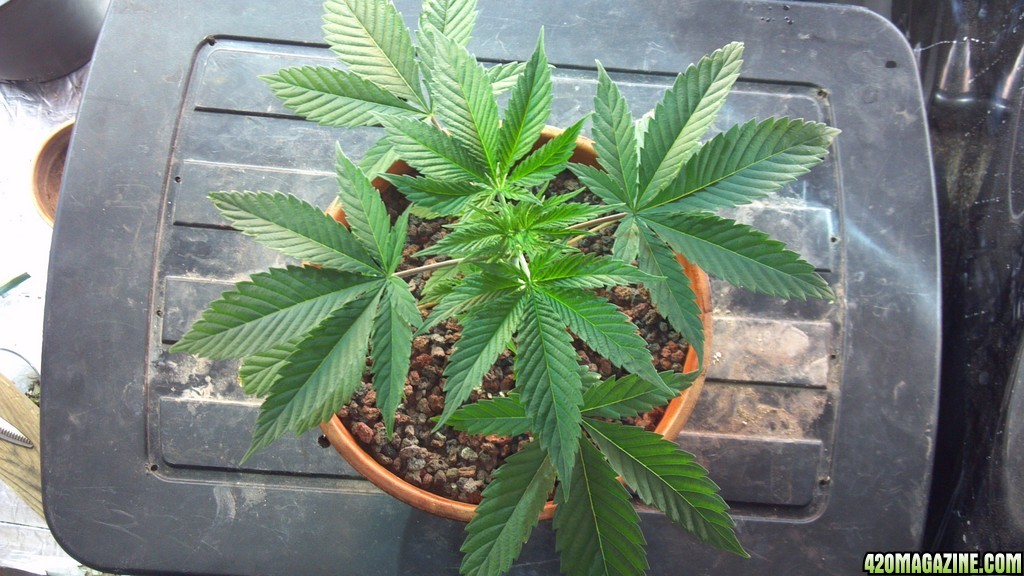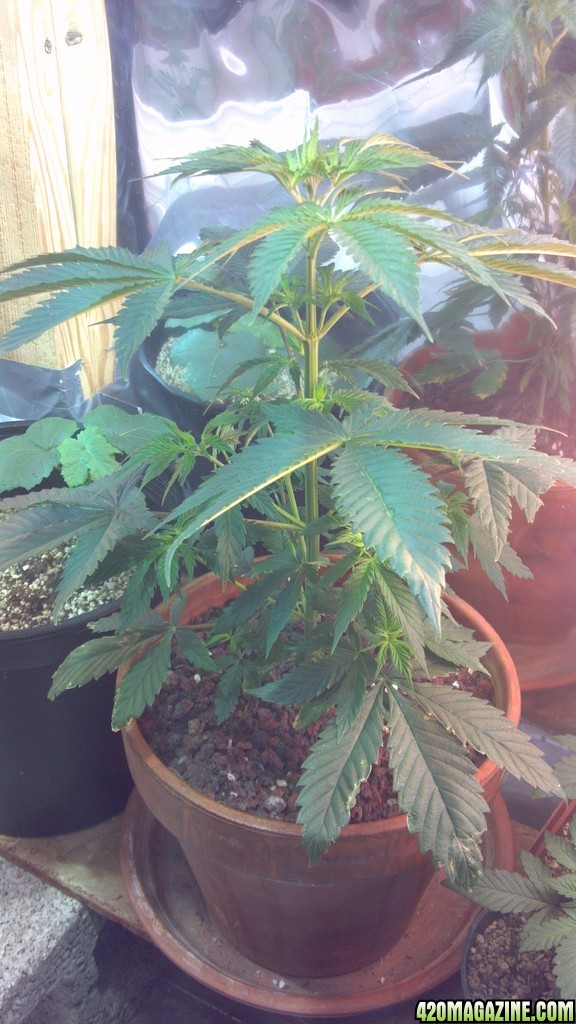Darkcannabis
New Member
Wow totally subbed. Coco and high brix What a great combo to challenge ourselves with.
How To Use Progressive Web App aka PWA On 420 Magazine Forum
Note: This feature may not be available in some browsers.
Wow totally subbed. Coco and high brix What a great combo to challenge ourselves with.
my only reservation is potassium, but perhaps that trick is recycling the coco and as the potassium gets used up it will fall into the proper range we shall see ,,and welcome to the coco nut shack!!
I didnt know there was a high amount of potassium in coco for high brix. Most if the high brix i read about involved peat. But as i grow in coco i have only touched high brix.








[h=1]Organic Gardening: Coconut Coir[/h][h=2]Coir is an Increasingly Popular Planting Medium that is Environmentally-Friendly![/h]Sep 5,2007
Don't feel bad if you've never heard of coconut coir! I never had either until I was doing some research on raising nightcrawlers. Apparently, besides being excellent bedding for worms, it is also an organic, environmentally-friendly replacement for peat moss, compost, vermiculite and other growth media and mulches used in home gardening and hydroponics. So what is coconut coir? When you buy a coconut in the store, it has had its hard outer covering removed to reveal the hard shell (the coconut seed) we recognize. In between these two coats is a fibrous material that is the coir. You've probably seen coconut coir without realizing what it was! Bristly door mats, stiff brushes, upholstery padding, fishing nets, twine and rope are commonly made from coconut fiber.
Coconut fiber has been used since ancient times. Indigenous to Southeast Asia, coconut trees were spread throughout the tropics by human travel and trade, and have been cultivated for at least 4,000 years. It is one of the most useful trees, providing food, drink, building materials, fuel and fiber. Coir fiber was used to lash together pieces to construct boats, buildings, weapons, and tools until the late eighteenth century, when iron nails were introduced to the region.
Although coconut trees grow in most tropical regions, the majority of commercially produced coir comes from Sri Lanka and India. This natural fiber is strong, has a hairy texture, and is resistant to salt water and the effects of weather. Brown coir is produced from fully ripened coconuts, and white core is produced from coconuts that are immature. White coir is softer and has less strength than the brown coir.
During the curing process the husks are kept in an environment that allows them to partially decompose and be separated into fibers and a residue called coir pith. This coir pith, or dust, accounts for about two-thirds of the product and was generally considered waste, until a process was developed in the 1980's that transformed it into a soil treatment, mulch, and hydroponic growth medium. The pith is compressed into bricks, discs, or bales that can be torn into chunks and rehydrated before use as a planting medium.
As a planting medium or mulch, coconut coir has many advantages over other traditional products. It is uniform, odorless, easy to handle, and does not crack, shrink, or produce a crust. The top layer always remains dry, which inhibits the growth of fungus. It has an ideal pH for growing plants and contains significant amounts of phosphorus and potassium, which are essential plant nutrients.
Free of seeds, and without fungal and bacterial spores, coir inhibits the growth of soil pathogens. Lightweight and porous, coir has excellent drainage and air porosity which allows plants to grow better root systems in a shorter length of time. Used as a mulch, coconut coir reduces the need for frequent watering, since it retains up to eight times its weight in water and releases it slowly, and will biodegrade over a period of three to four years.
Coir is not widely available in gardening centers but can be ordered online from manufacturers and distributors. It is available in compressed disks, bricks, or bales. When rehydrated for use, coir will expand to many times its original size. A disk that is 5" in diameter and 1-1/2" thick, when rehydrated, will fill a gallon container.
Unlike peat moss, coconut coir is a 100% renewable resource. Coconut trees flower monthly, but it takes a year for a coconut to mature, so a tree always contains coconuts in various stages of development. Each tree will yield between 50 and 100 coconuts per year.
One drawback to the coir manufacturing process is the waste water that results. Organic pollutants, including tannin, fat, polyphenols, pectin, and bacteria including salmonella are released during the manufacturing process, but researchers are looking into ways to treat this waste water, and at least one manufacturer claims to be treating the waste water they produce.
New uses for coconut coir are being developed. Its durability, ability to hold water and the hairy texture which helps it cling to seeds and soil is making coir an increasingly popular choice for geotextiles, blankets which are laid on bare soil to prevent erosion and allow ground cover to take hold.
Coir biodegrades slowly and there are mountains of coir pith, which until the 1980's was considered a waste product, waiting to be processed. As the demand for coir as a planting medium grows, these mountains will eventually be reduced. The use of coir in home gardens and hydroponics is increasing rapidly as consumers become more aware of its many advantages over other growth media and its environmental friendliness.




well my reptillian friend not all of us have your masterful talent to grow perfect plants while playing primo blues licks and whoppin up on a.i. zerg/protoss/terran ,but we do so try, how are things my friend?I've used straight coco coir successfully, and will continue until I can grow with no media but water.
Rinsed & wet I root cuttings, germinate seeds, keep mamas, run flowering. Versatile & cheap = perfect
I ignore possible K content, and use <1000 ppm BPN 2-part, with 245 of that being from the tap, mostly Ca and Mg.
If I had to use rainwater or RO, I'd supplement lime and epsom. Tap in my town is good.
I pour it in @ about pH6-7, runoff is 5.4 or so.
so far i like it real well but its in the longer term i'll see any shortcomings in flower i assume will be the real test, i try to avoid peat as the bogs are not really a "renewable" resourse,and does not recycle as well as coco, im really into saving and recooking my coco blends seems to have an even better result,much less need for calmag/lime etc, and mycos seem to take ahold better in coco thats been pumped full of organics & mycos before, just something i have been experimenting with, that #4 your working with is tried &proven to work well, im moving in a different direction with trying to create a coco based medium that can reach the end with minimal need for nutes etc,Nice info bfam, hope your new tent and dual light setup is doing great things, cant wait to see how that turns out once your dialed in. Hows the plants in your new mix doing? Guess i ought to go take a peek? Lol
I tell ya i like the mix im using that has the peat in it with the coco, love it

lol well in either case its all good news ! thats a pretty plant so are you doing something for the calmag situation? it dosnt look like its showing yet well i do see a hint on the edges just starting to crinkle a little, i have been mixing a killer blend i have improved some on the recipe in the first post of this thread, mostly just tweaking levels , i will post result and differences for each recipe later, the newest thing is done so all i have to do is add ph'd water till flowering starts

hmm i just noticed thats in an unsealed clay pot,are you having any issues with drying,i did when i used em' seems the clay wicks the water into the air faster than even an airpot on i think im done.com lol
 Or i could just be smoking to much.
Or i could just be smoking to much.right on sound like you got it locked down then , i make my own worm castinges i feed the red wigglers alot of trim from vegging plants i read that if you feed them what your gonna use them on it will make the castings the perfect food for your plants, it will contain the nutrients your plants most need i guess it would be custom worm castingsSweet thanks. To help the medium from cal/mag deficiency i did add some gypsum and I do fishy ferts and foliar sprays. Also, even though I have never tested it but My worm castings come from my own vermicompost which i amend with gypsum, 20 mule team borax, egg shells, and limestone when i have it. I Will look forward to your results.


they can work well i just sealed the outside of mine with clear spray paint and it helped alot, but i moved to pots that dont hav narroer bottoms if the pot is a 10 incher i wnt it to be 10 all the way down i want all the root room i can getYeah it drys out pretty quick compared to the plastc pots or bags, but it seems to be a good insulator and the roots grow and fill in real well.Or i could just be smoking to much.

